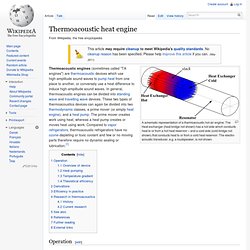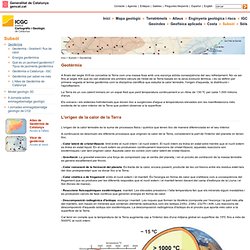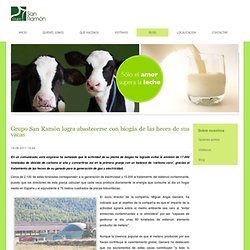

Energy Foundation. BIOENERGY Training Center » Matrix & Discussion Guides. Informationsdienst: basisEnergie: Lüften und Energiesparen - Mechanische Lüftungsanlagen. Energieeffiziente Häuser (z. B. Niedrigenergiehäuser, Passivhäuser und vergleichbare Standards) haben durch eine bessere Dämmung der Gebäudehülle, dichte Fugen und das Vermeiden von Wärmebrücken niedrige Wärmeverluste. Unter diesen Voraussetzungen kann eine mechanische Lüftungsanlage die Verluste durch das Lüften reduzieren, von 10 – 15% bei einer Abluftanlage bis hin zu 75 – 90% bei einer Anlage mit Wärmerückgewinnung.
In Häusern mit Lüftungsanlagen dürfen die Fenster geöffnet werden, auch wenn viele Bewohner wegen der guten Luftqualität hierzu nur selten ein Bedürfnis verspüren. Die Anlagen saugen „verbrauchte“ und feuchte Luft in Bad-, Sanitär- und/oder Küchen ab, während die Frischluft in die Wohnräume geleitet wird. Es gibt folgende Anlagen: Abluftanlagen. Zentrale Zu- und Abluftanlagen. Lüftungsanlagen mit Wärmerückgewinnung. Thermoacoustic heat engine. A schematic representation of a thermoacoustic hot-air engine.

The Heat exchanger (heat bridge not shown) has a hot side which conducts heat to or from a hot heat reservoir – and a cold side (cold bridge not shown) that conducts heat to or from a cold heat reservoir. The electro-acoustic transducer, e.g. a loudspeaker, is not shown. Thermoacoustic engines (sometimes called "TA engines") are thermoacoustic devices which use high-amplitude sound waves to pump heat from one place to another, or conversely use a heat difference to induce high-amplitude sound waves. In general, thermoacoustic engines can be divided into standing wave and travelling wave devices. These two types of thermoacoustics devices can again be divided into two thermodynamic classes, a prime mover (or simply heat engine), and a heat pump. Operation[edit] Overview of device[edit] Consider a tube closed at both ends. The stack is a part consisting of small parallel channels.
Heat pumping[edit] Temperature gradient[edit] Geotèrmia. A finals del segle XVII es concebia la Terra com una massa fosa amb una escorça sòlida conseqüència del seu refredament.

No va ser fins al segle XIX que es van elaborar els primers càlculs de l'edat de la Terra basats en la seva evolució tèrmica, i es va definir per primera vegada el terme geotèrmia com la disciplina científica que estudia la calor terrestre, l'origen d'aquesta, la distribució i l'aprofitament. La Terra és un cos calent immers en un espai fred que perd temperatura contínuament a un ritme de 130 ºC per cada 1.000 milions d'anys. Els volcans i els sistemes hidrotermals que donen lloc a surgències d'aigua a temperatures elevades són les manifestacions més evidents de la calor interior de la Terra que podem observar a la superfície. Por el empleo y la sostenibilidad y el desarrollo rural. International.
Plan de Energías Renovables 2011- 2020. Estudios PER 2011-2020. Asociación Española de Gestores de Biomasas de Madera Recuperada / ASERMA. Jesus fernández biomasa. Granja Biogas. En un comunicado, esta empresa ha señalado que la actividad de su planta de biogás ha logrado evitar la emisión de 17.000 toneladas de dióxido de carbono al año y convertirse así en la primera granja con un balance de 'carbono cero', gracias al tratamiento de las heces de su ganado para la generación de gas y electricidad.

Cerca de 2.100 de estas toneladas corresponden a la generación de electricidad y 15.000 al tratamiento del estiércol contaminante, puesto que los directores de esta granja calculan que cada vaca produce diariamente la energía que consume al día un hogar medio en España y el equivalente a 75 metros cuadrados de placas fotovoltaicas. German Village Produces 321% More Energy Than It Needs!
Ok, those Germans are just showing off now.

Not only has the nation announced plans to shut down all of its nuclear power plants and started the construction of 2,800 miles of transmission lines for its new renewable energy initiative, but now the village of Wildpoldsried is producing 321% more energy than it needs! The small agricultural village in the state of Bavaria is generating an impressive $5.7 million in annual revenue from renewable energy.
It’s no surprise that the country that has kicked butt at the Solar Decathlon competition (to produce energy positive solar houses) year after year is the home to such a productive energy-efficient village. The village’s green initiative first started in 1997 when the village council decided that it should build new industries, keep initiatives local, bring in new revenue, and create no debt. Via BioCycle. Repowering Communities.
Wind.